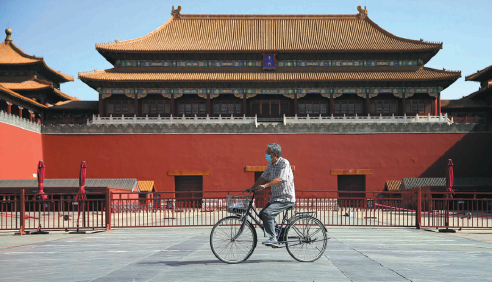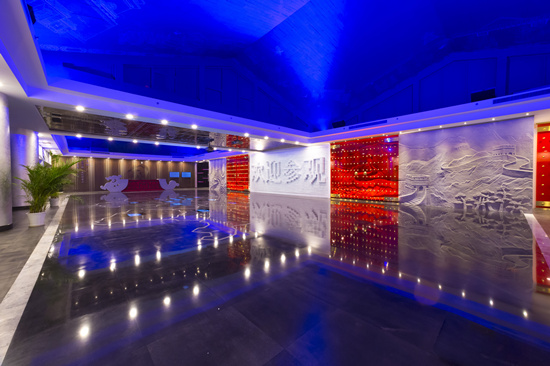Capital to cement position as a cultural center

A man rides a bicycle by the Palace Museum, which was among a host of museums in Beijing to launch events marking International Museum Day that falls on May 18 every year. [Photo/Guo Junfeng for China Daily]
Long-term plan to upgrade historic Beijing sites aims to make it known as a city of museums
Beijing is poised to become a "city of museums", according to a 2019-35 plan for the construction of a national cultural center.
The plan, released in April, aims to build Beijing into a city of museums with distinctive features, scores of exhibits and an intelligent layout of cultural resources.
To build a city of museums is a key part of the capital's drive to develop itself into a national cultural center, said Chen Mingjie, director of the Beijing Administration of Cultural Heritage, at a recent seminar.
An Laishun, vice-president of the International Council of Museums, said that given the current policy and social environment, the decision came at the right time.
The capital needs to further upgrade a number of museums that represent its history, culture, technology, industry and ecology, thus creating a more diverse, balanced and inclusive museum system, An said.
Beijing is home to 187 registered museums. Nearly 40 of them have reopened since May 1, based on timeshare bookings and limiting daily visitor numbers.
Even those that opted for a temporary closure during the COVID-19 outbreak remain active in cyberspace. In cooperation with internet platforms, they have launched a variety of livestreaming shows and provided a new way to enjoy culture, Xinhua News Agency reported.
To celebrate International Museum Day, which falls on May 18 every year, museums across Beijing rolled out 94 themed events, including 50 online exhibitions and 15 livestreaming shows.
Highlights of the online exhibitions included Celebrating Spring Festival in the Forbidden City by the Palace Museum, and a virtual version of Great Changes, which was debuted by the National Museum of China in 2018 to commemorate the 40th anniversary of China's reform and opening-up.
As part of the celebrations, virtual tours of late celebrities' former residences in Beijing, which now serve as museums, were broadcast in a livestreaming program on May 13-18.
These involved 10 historical figures who lived in the city, such as writers Lao She and Lu Xun; Peking Opera master Mei Lanfang; geologist Li Siguang; and Zhan Tianyou, who is known as the father of China's railways.
At the Lao She Memorial Hall, a one-hour live broadcast attracted more than 3.32 million viewers on May 16, according to China National Radio.
Zhoukoudian Site Museum, the Museum of Chinese Gardens and Landscape Architecture, and Beijing Ancient Architecture Museum all showcased their diverse collections through virtual tours on May 18.
During livestreaming shows at the China National Film Museum and Overseas Chinese History Museum of China, viewers could enjoy one-to-one guide services, CNR reported.
Some, including China Media Museum, adopted virtual reality to provide vivid cloud tour experiences.
"Even though we are in a special period of COVID-19 prevention, we still connect our audience closely with the beauty of cultural heritage with the help of VR tech," said Pan Li, head of China Media Museum."Going to museums has become fashionable nowadays as the public has a growing need for culture," he added.
In addition, the Capital Museum initiated a series of "Me and Museum" art educational programs, soliciting entries of video and audio clips, paintings and photographs from the public.
The best of them were displayed in the museum.
Li Qing, deputy curator of the Memorial Hall of Xu Beihong (1895-1953), a renowned painter, told Xinhua News Agency: "Livestreaming has given us a new approach to providing cultural services for the public and it has expanded the role of museums in social education."

 Responsibilities of the SOCAAC
Responsibilities of the SOCAAC Experiencing Beijing 2023
Experiencing Beijing 2023